One of the best aspects of snowshoeing and hiking is that it’s so easy to get started. You can strap on those ‘shoes, head for some local snow, and explore at your pace. Unfortunately, though, sometimes snowshoeing and winter hiking can be so easy that we forget about safety and the potential risks. When instead, safety should always be the number one priority.
Granted, depending on the physical location, geography, and difficulty of your outing, the safety measures you take can look a bit different. So, in addition to the basics, and to ensure you have all your bases covered, we’ve rounded up some safety strategies to keep in mind for your next snowshoe outing.
1. Practice using a compass
Technology has changed the way we live our lives, and it can be easy to rely on a phone or GPS when out in the snow. However, there are times when technology fails.
If you’re snowshoeing in a remote area and your GPS decides to break, that could easily lead to getting lost. The snow sure is beautiful, but it can also make it incredibly difficult to navigate and easy to get turned around.
So, in addition to technology, bring along a good old-fashioned compass (and ideally a topographic map via My Topo) while snowshoeing or winter hiking to show you back to safety.
Using a compass can be complex. So, before bringing your compass with you on a remote trail, practice using it in an area you’re very familiar with to become comfortable with it.
Here are a few basics to keep in mind:
- The red needle of the compass will always point towards magnetic north. However, maps are oriented towards true north. Therefore, to make your compass point towards true north, you need to adjust your compass.
- To adjust your compass, you need to find the declination, which can be found on a topographic map of the area you want to snowshoe, or by looking up the magnetic declination estimated value at NOAA.
- Most compasses are adjusted via a screw, but check out the manufacturer’s website for directions related to your specific compass. Once your compass is adjusted, you can find your bearings on the trail using a map or sight.
Read More: Compass and Map Reading 101
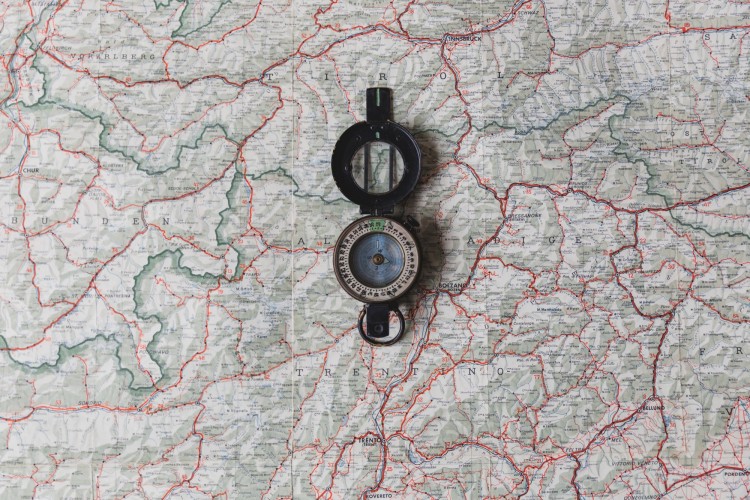
Go tech-free and stay safe with a map and compass on your outdoor adventure. Photo: Matthew Henry via Burst
2. Review the dangers of winter weather
When out for long periods in freezing weather or in cold water, there may be a possibility of dangers such as hypothermia or frostbite.
Hypothermia occurs when the body loses heat faster than it produces heat and when your body temperature falls below 95 F / 35 C. The first sign of hypothermia is usually shivering, but it can also include slurred speech, lack of coordination, very low energy, shallow breathing, confusion, or loss of consciousness.
Frostbite occurs when our skin tissue freezes from exposure to the cold. The first signs are pale skin and numbness.
As preventive measures for both conditions, you can make sure to dress appropriately for the weather, including covering your extremities. In addition, it’s critical that if your clothes get wet, to change them as soon as possible. For this reason, using clothing that is waterproof or water repellent is necessary for safety when snowshoeing in areas where you can’t change clothes.
If you get in this situation or are with someone who does, try to get warm as soon as possible. Warming could include using an emergency blanket or finding shelter, warm food or drinks, lighting a fire or using a stove, or getting close to share some body heat.
Read More: Book Review: Hypothermia, Frostbite, and Other Cold Injuries
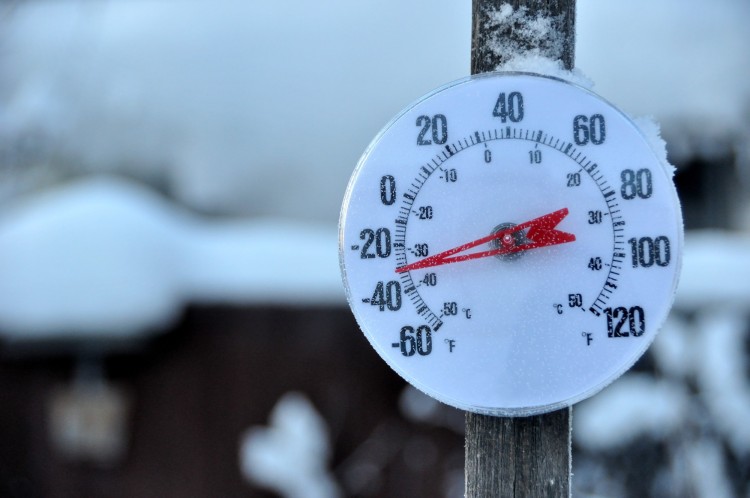
Hypothermia and frostbite are more common in frigid temperatures. Photo: Gary Whitton via Shutterstock
3. Learn how to spot hazards on the trail
Trails with snow can look very different than warm-weather trails. This fact is one reason why we recommend scouting trails in the fall for snowshoe season. Also, snow can be incredibly deceptive and lead to a change in the natural landscape that is not always safe and can lead to a dangerous situation.
One of the most common safety hazards to be aware of when snowshoeing or winter hiking is steep slopes. Snow can make a steep incline look pretty mellow, especially in deep snow. In some cases, this can lead to severe sinking in the snow, even if you have snowshoes that do well in deep snow conditions (these are my favorite). To avoid this situation, make sure to look at your topographic map to determine incline or choose slopes that are familiar with if off-trail. Or stay on the trail at hand. If you find yourself stuck in the snow, you can use your poles for leverage or a nearby tree limb to help pry yourself free.
Another common hazard on the trail is frozen water. Avoid traveling on icy lakes or rivers if possible. If you do need to cross, always use caution. To stay safe when crossing ice, make sure it is at least 4 inches thick. Ice tends to be thinner when near obstacles, dams, or near cracks. Before crossing, you may also want to loosen your snowshoe bindings to allow for an easier exit if you fall. Also, in case you fall, try to remain calm and get out the way you came in by using your hands (or ice ax) on the ice’s solid surface.
Read More: Safety First: Snowshoeing Hazards and How to Avoid Them
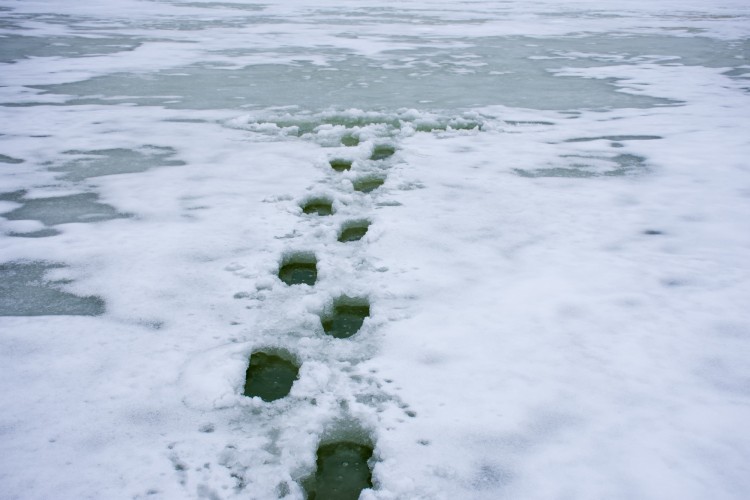
Try to avoid ice if possible or if you have to cross, always be cautious. Photo: Shidlovski via Shutterstock
4. Become avalanche aware
Avalanche awareness is a key to safety for snowshoers and winter hikers of all experience levels. Frequently, it can be easy to think that you only need to know about avalanches if going deep in the mountains. The truth, though, is that avalanches can happen in populated areas and on crowded trails.
Also, how can we begin to avoid avalanche areas or travel through them safely if we don’t know what an avalanche area looks like or how they start?
Instead, we can learn the basics to stay safe while snowshoeing. A few key takeaways are:
- Do your research before you go about your trail of interest
- Assess your risk level by looking at the avalanche forecast for your snowshoe route before you go
- Avalanches depend on the terrain and are most common on slopes between 30-45 degrees
- Be aware of your surroundings to look for avalanche warning signs and danger zones
- Heavy snowfall, wind, and warm days after a storm increase the chance of avalanches
- Be prepared if you do head into avalanche terrain
Avalanche Canada offers a basic one-page introduction and online tutorial of what avalanche terrain and conditions look like, along with how to decipher the avalanche forecast in your area. Or, check out a more-advanced course through AIARE.
Read More: Why All Snowshoers Should Be Avalanche Aware (Even Beginners)
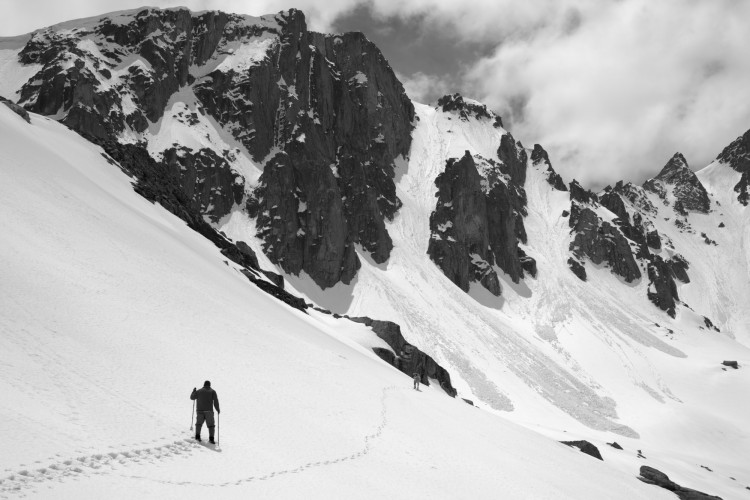
Be careful when snowshoeing near avalanche-prone areas. This snowshoer is in the danger zone at the bottom of a steep slope. There are also signs of past avalanches ahead of them. Photo: Lizard via Shutterstock
5. Check your ten essentials
Though we can snowshoe in our backyard, it’s also fun to hit the trail or head into the remote backcountry. In those cases, the ten essentials are crucial to safety while snowshoeing or winter hiking.
You may already have a ten essentials kit in place. If so, it’s always helpful to go through occasionally and check your gear for defects or other issues. However, if you are without a ten essentials kit, now is the time to create one.
In your kit, you’ll want to bring:
- first aid kit
- emergency shelter – this could include an emergency blanket or tarp
- navigation – it’s a good thing you now know how to use a compass 🙂
- a light source, like a headlamp, for navigating in the dark
- sun and wind protection
- extra clothes
- gear for a fire – fire starter, candle, stove
- knife
- extra food
- extra water
In addition to the above, you could also consider bringing an ice ax, a whistle, and a homemade snowshoe repair kit.
Read More: What To Bring When Snowshoeing: Top Accessories for the Day Hiker
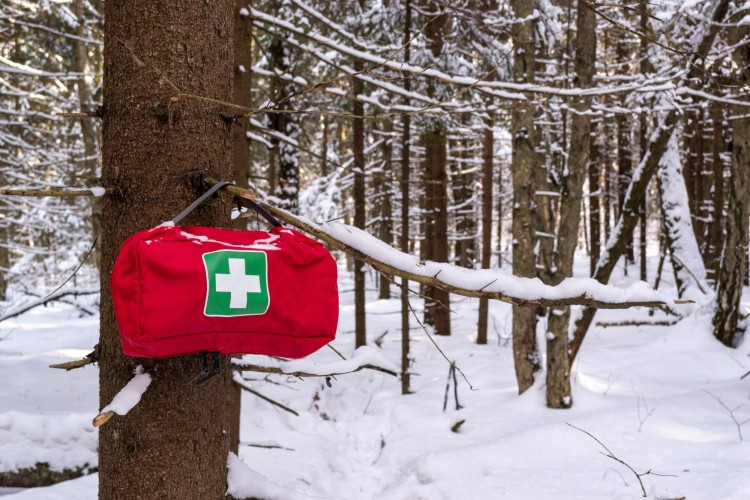
Keep a first aid kit in your pack as part of your ten essentials. Photo: Ksenia Rybka via Shutterstock
6. Orient yourself with wildlife safety
There are many avenues for keeping humans safe while snowshoeing. However, what about these unpredictable moments when the safety concern includes an animal?
It’s essential to stay aware when on and off the trail. Focus on where you’re stepping and the noises around you, and avoid wearing headphones that cancel noise when out snowshoeing. So you know what animals to expect, do your research, and learn which animals inhabit the area.
Furthermore, while you’re snowshoeing, remember to make noise. Noise will alert wildlife you are near, so the animal is not surprised or taken off guard.
If you see wildlife on the trail, give them plenty of space (at least 25 yards for plant-eaters and 100 yards for predators) and don’t approach the animal. The importance of space is one reason pets should remain leashed when snowshoeing in an area with active wildlife. You don’t want to risk your pet approaching a wild animal and a conflict arising. Instead, we always want to respect wildlife by following Leave No Trace principles.
For recommendations about what to do in a wildlife encounter or attack, see this guide by REI, which details suggestions for specific animals.
Read More: The Dog Days of Winter: Tips for Snowshoeing with Pets
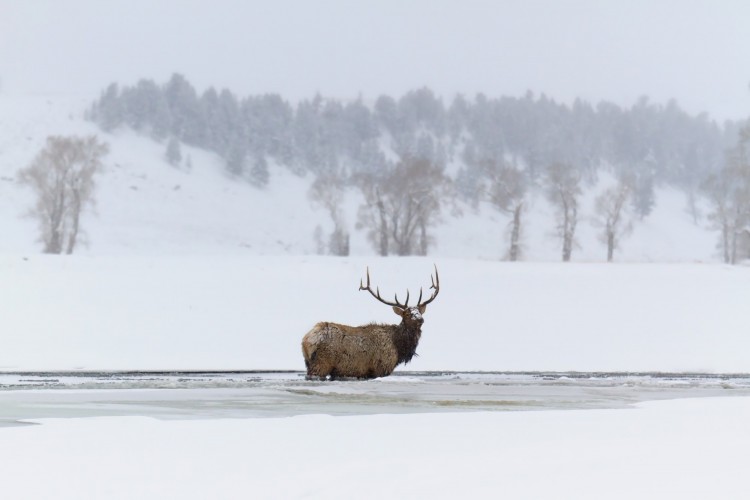
If you see wildlife (like this elk in Yellowstone), give them plenty of space and observe from a distance. Photo: Shutterstock / Sumikophoto
Overall
No matter our experience level or how well we know the area where you’re snowshoeing, emergencies happen. The weather can change and lead us astray, or we can get caught in an unexpected hazard. By keeping up with our safety skills for winter hiking and snowshoeing, we increase our odds of a successful snowshoe outing and not one that ends in disaster.
What other recommendations do you have for refreshing your snowshoeing and winter hiking safety? Please share your thoughts with us in the comments below.
Read Next: Top 5 Safety Tips for Snowshoeing

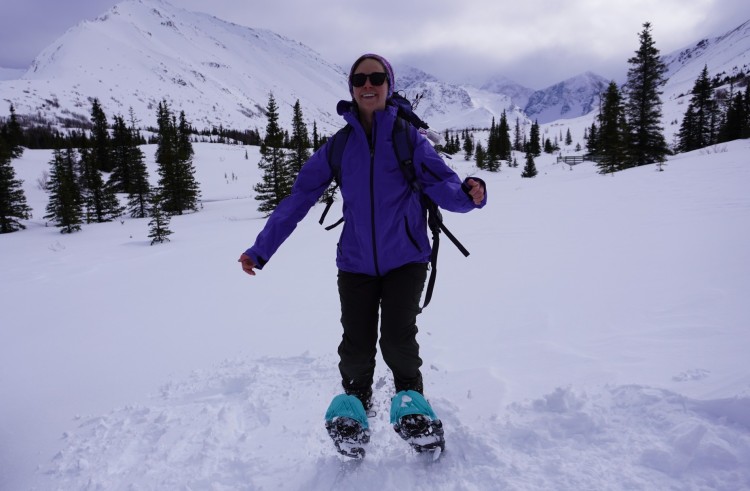
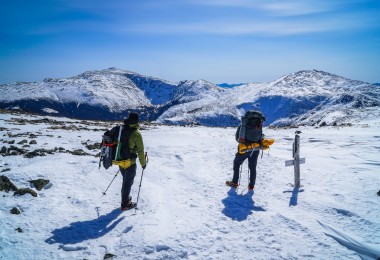
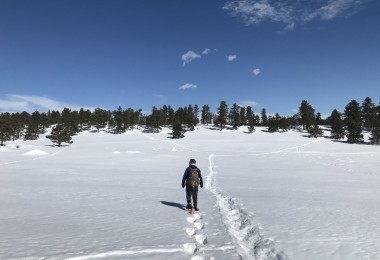
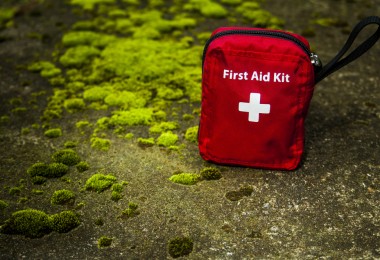
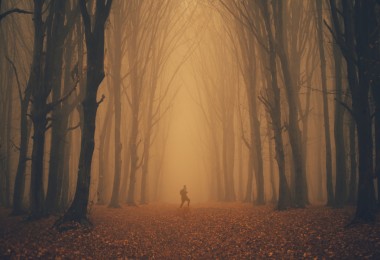

Excellent!